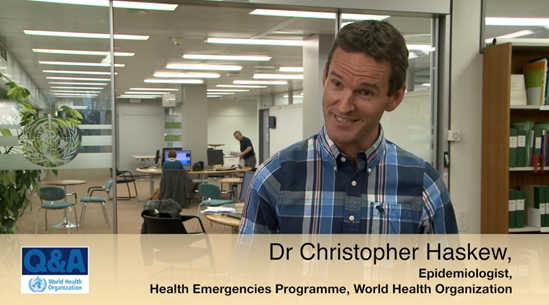Earthquakes
Earthquakes can strike suddenly and without warning. An earthquake is a violent and abrupt shaking of the ground, caused by movement between tectonic plates along a fault line in the earth’s crust. Earthquakes can result in the ground shaking, soil liquefaction, landslides, fissures, avalanches, fires and tsunamis. The extent of destruction and harm caused by an earthquake depends on:
- magnitude
- intensity and duration
- the local geology
- the time of day that it occurs
- building and industrial plant design and materials
- the risk-management measures put in place.
Between 1998-2017, earthquakes caused nearly 750 000 deaths globally, more than half of all deaths related to natural disasters. More than 125 million people were affected by earthquakes during this time period, meaning they were injured, made homeless, displaced or evacuated during the emergency phase of the disaster.
Health threats due to earthquakes can vary according the magnitude of the earthquake, the nature of the built environment (such as poor housing or urban slums), and the secondary effects of the earthquake, like tsunamis or landslides. Earthquakes can have immediate and long-term impacts on health.
Immediate health impacts include:
- trauma-related deaths and injuries from building collapse;
- trauma-related deaths and injuries from the secondary effects of the earthquake, like drowning from tsunamis or burns from fires.
Medium-term health impacts include:
- secondary infection of untreated wounds;
- increased morbidity and risk of complications related to pregnancy and childbirth due to interrupted obstetric and neonatal services;
- potential risk of communicable diseases, particularly in areas affected by overcrowding;
- increased morbidity and risk of complications of chronic diseases due to interruption of treatment;
- increased psychosocial needs;
- potential environmental contamination by chemical/radiological agents following destruction of industrial infrastructure.
Earthquakes can also damage health facilities and transportation, which can disrupt service delivery and access to care. Health workers may not be able to reach health facilities that are still functional and medical supplies may be lost.
As the health cluster lead for global emergencies, WHO works with partners to mitigate, prepare and respond to earthquakes worldwide. This includes:
- strengthening health emergency risk management systems
- limiting the risk of exposure to earthquakes by improving the quality of the built environment, with better land-use control, including regulating building
- ensuring that health facilities are resilient to hazards, and that they are able to remain functional and able to respond to increased and changed health needs after earthquakes, with staff trained appropriately
- mobilizing medical response teams, including establishing temporary health structures and field hospitals, as well as emergency medical kits
- investing in community preparedness, as local resident are often the first responders.





